Filling the Gap: AMOLED and LCD from 2010 to 2012
by Joshua Ho on July 26, 2014 6:00 AM ESTHTC Desire HD
The next device we’ll look at is the Desire HD. LCD has always been more mature than AMOLED, so it would make sense for the improvement over the past four years to be much less. However, it seems that the Desire HD’s display is a far cry from today’s smartphone displays. While not as grating as the effects of PenTile on the Galaxy S, the low resolution is still quite obvious on this display. Careful examination shows quite a bit of aliasing, but from a distance it isn’t too obvious. The other issue here is the viewing angle stability. Much like the Xperia Z1s, the display rapidly washes out towards homogenous white with increasingly extreme viewing angles. This is likely due to the same *VA display technology used in both, although that’s about where the similarities end. There’s also no display lamination so reflectance is quite high, subjectively speaking.
As seen by the brightness graph, the Desire HD’s display is incredibly dim. I suspect this was done to try and keep battery life in check as the Desire HD was rather notorious for poor battery life. Contrast is also rather dismal, but I suspect this is partially due to the lack of dynamic contrast or similar mechanisms to artificially boost contrast values. The low brightness may also be due to the sheer age of the device.
In grayscale, the Desire HD is also rather poor. Although things aren’t quite as bad as the Galaxy S, they aren’t very good either. I suspect that the excessive green/blue in these devices was a method of boosting peak brightness, although by the Sensation it seems that HTC had clamped down white point to some extent.
In the saturation sweep, the Desire HD is eerily reminiscent of the One (M8), although this is mostly due to the rather extreme blues produced. The display exceeds sRGB by a certain amount in every sweep, and while the error here is relatively low, such error tends to magnify a great deal in the ColorChecker test.
It turns out that this is exactly what happens. Relatively acceptable error does become unacceptable in the ColorChecker. In reality this display is likely to be inaccurate for any color-sensitive use case, and color reproduction is unlikely to be close to the original image. It’s definitely better than the Galaxy S for color accuracy though.


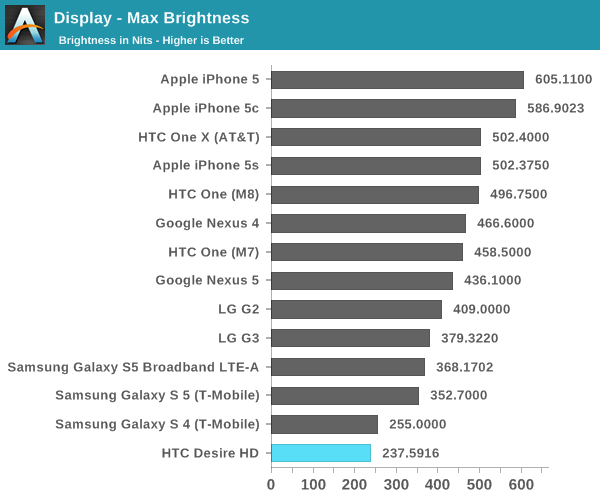
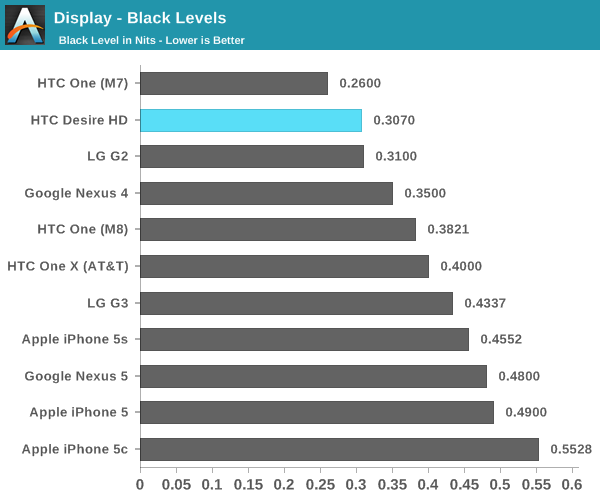
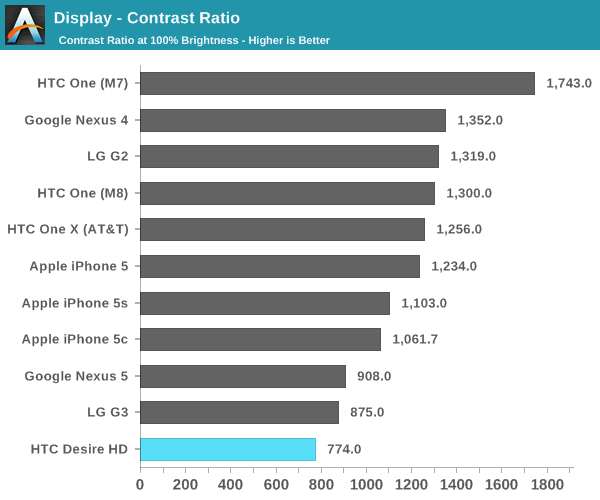
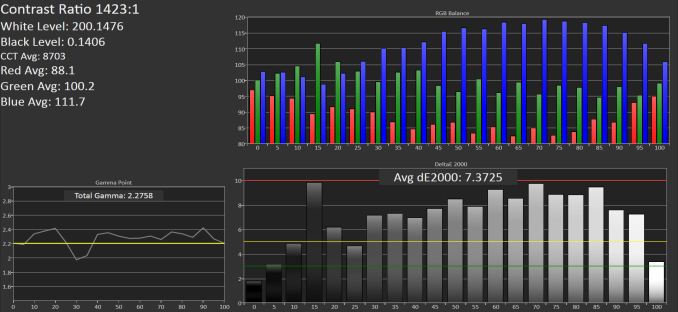
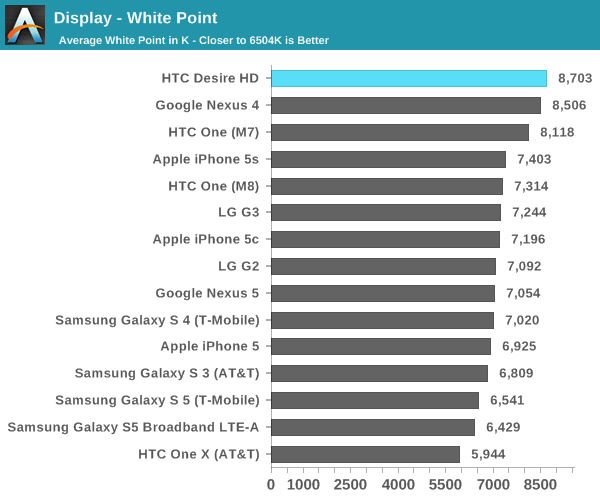
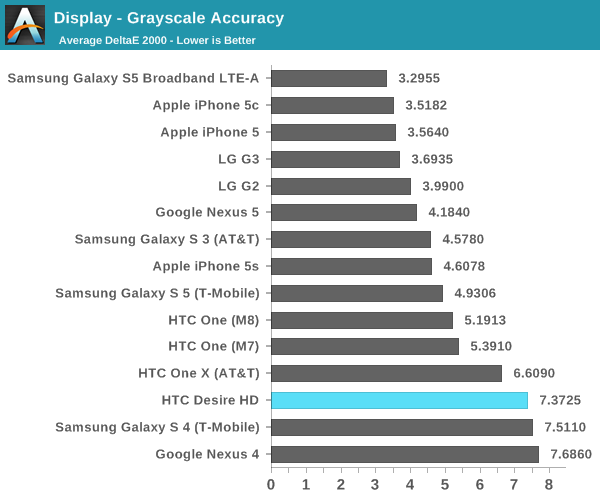
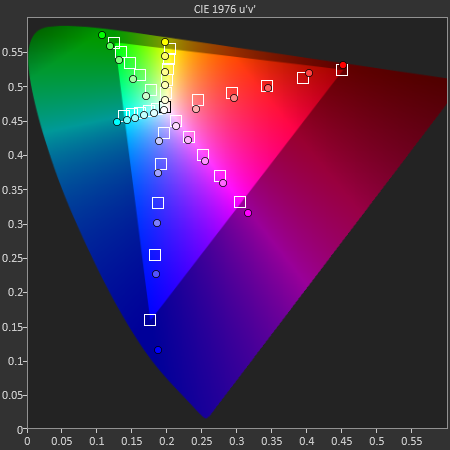
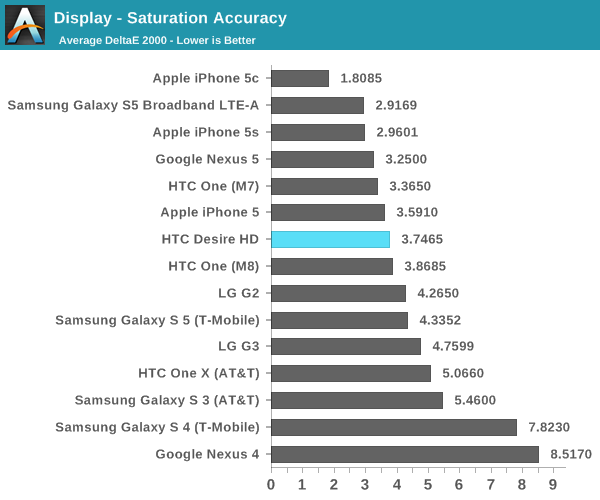
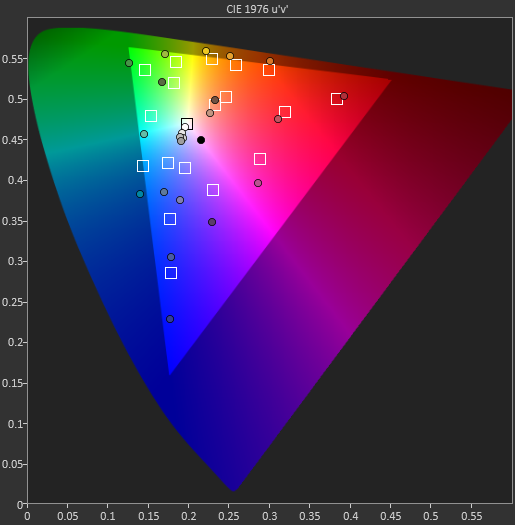
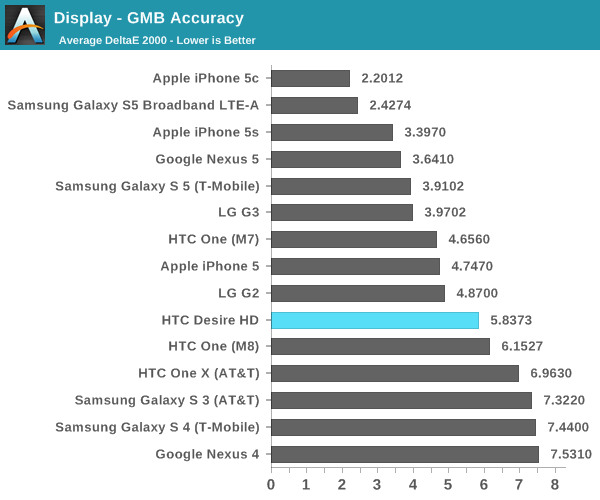








72 Comments
View All Comments
kazuha - Saturday, July 26, 2014 - link
Did not know LG G3 had such a terrible contrast. I witnessed that in the store also, with the screen looking too cold and low contrast compared to competition from HTC, Samsung and even the LG G2. Wonder if it's a consequence of 4K panels just not being up to par yet. If so, seems like an odd inclusion, because the display also has negative draw backs in terms of power draw and battery life.Not sure which phone to get now. Was planning to wait for the Google Nexus 6, but if it's based on the LG G3 with the same display, I would rather not actually. Maybe buy a used HTC One M8, although I hate the fact that even with a much smaller screen, it is just as tall as the LG G3. I found the G3 just a bit too tall, to swipe down the top menu without changing grip, and I have average male hands.
mmrezaie - Saturday, July 26, 2014 - link
yes and it's not just numbers. I saw them side by side. I couldn't tell the resolution difference but g2 had far better colors. and we all know interface on both sucks ;-).Solandri - Saturday, July 26, 2014 - link
One thing I've noticed with the LG displays (notably my Nexus 5) is that the blacks brighten up even if you're slightly off the central axis. By the time you're at 85 degrees (looking at it almost on edge), a black LG screen is almost as bright as a white screen. Since most colorimeters measure at close to 90 degrees from the screen, the real-life contrast ratio when you're using the phone at about 60 or 45 degrees is actually much worse than measured.That was the biggest shock to me coming from AMOLED. I tried using the same alarm clock app I used on my previous AMOLED phone, and I couldn't sleep. The phone was on the night stand facing up, but the mostly-black display was shining brightly like a lamp into my eyes. I'm back in the AMOLED camp for my next phone. Black should be black - always.
fokka - Sunday, July 27, 2014 - link
i've been similarly disappointed going from an amoled nexus one to my current sensation xe with lcd display. the display is bigger (4,3 vs. 3,7"), has a higher resolution (960x540 vs 800x480) and an rgb matrix instead of pentile, but contrast and especially viewing angles are a clear step back from the old amoled screen.djw39 - Saturday, July 26, 2014 - link
Why would there be an expectation that the Nexus 6 will have the same display as the G3? Nexus 5 does not have the same display as G2.crispbp04 - Saturday, July 26, 2014 - link
g3 has a 1440p panel not a 4k panel.fokka - Sunday, July 27, 2014 - link
oh, i overlooked your comment...tuxRoller - Saturday, July 26, 2014 - link
While not impossible, I'd be amazed if google went with lg for a third year in a row.What's more, it wouldn't surprise me if the N6 was delayed so they could use the armv8 chips. That's something their engineers really need to be focusing on.
Impulses - Saturday, July 26, 2014 - link
Then there's the whole Android Silver thing... End of this year is gonna be interesting for the future of Android phones, even tho I've got little interest in upgrading my Nexus 5 right now.tuxRoller - Monday, July 28, 2014 - link
Me too. My N5 is plenty fast enough and battery life is good. Even the camera has become far better over the course of updates.The latest rumor indicates the new nexus will be a Motorola. Again, possible, but my bet is either Sony or htc. LG seems extremely unlikely.